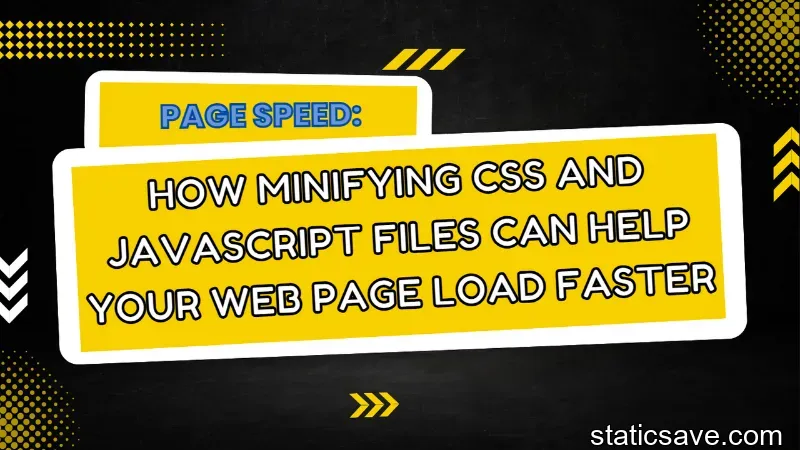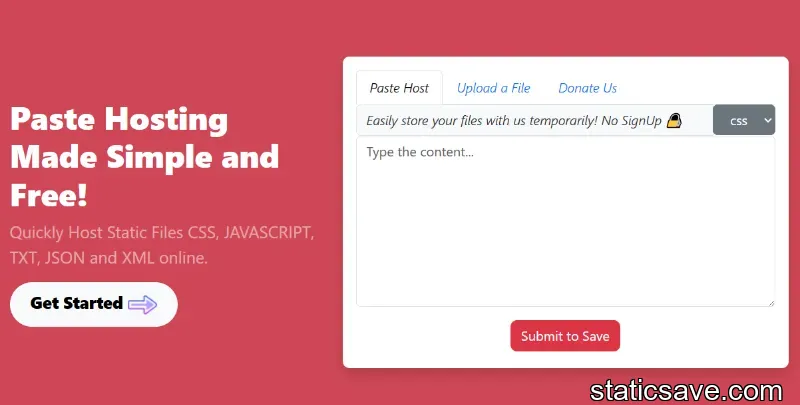Page Speed: How Minifying CSS and JavaScript Files Can Help Your Web Page Load Faster

Using CSS and JavaScript can help you improve the functionality of your website and make it more visually appealing. Using large CSS and JavaScript files might seem like an easy way to spruce up your website, but it can actually have the opposite effect on page speed, making your site much slower to load than it needs to be.
However, if you don’t minify your files first, they can cause page load time to be much slower than it needs to be. Minifying CSS and JavaScript files can help improve page speed by reducing file sizes and helping to streamline your website code, leading to more visitors returning in the future and a better search engine ranking.
Why file sizes matter?
If you haven’t run a website speed test lately, do it now. You’ll probably find that your page takes longer to load than you think it should. The reason for that is simple—the more files your site loads, the longer it takes for everything to be downloaded. That doesn’t just mean slower loading times; it also means users may not see your content at all if their internet connection isn’t fast enough to download all of those assets in time.
Read: Minifying CSS and JavaScript to Improve PageSpeed
What is minification of files?
Before anything else, you should understand what minification is. It’s a process through which unnecessary characters are removed from source code. That way, your website loads faster since there are fewer bytes to transfer in terms of raw data.
Also, if you have multiple files to transfer, it’s important that they can be compressed into a single file for faster download speeds. This is where minification comes in handy.
As such, when we talk about minifying HTML, CSS or JavaScript files, we’re referring to removing all unnecessary characters without altering their functionality. This may sound like a simple task but it isn’t always as easy as one might think due to how browsers work.
How to optimize your site for speed?
This can be done by minifying, concatenating (combining multiple files into one), gzipping, deferring loading of non-critical resources (i.e. images) and using a CDN to reduce latency.
Optimizing your site for speed is not only important for search engine rankings but also user experience. A faster site will lead to happier users which in turn will lead to more conversions from your site.
Also read: Importance of External Hosting for CSS and JS Files
Javascript optimizations
Javascript is a little trickier to optimize than HTML. All browsers interpret Javascript differently, so you have to consider cross-browser compatibility when coding your code. That said, in most cases there are still a few things you can do to speed up your code while not compromising it’s functionality.
First of all, avoid using multiple libraries whenever possible. For example, don’t use jQuery for DOM manipulation and then also use MooTools for other functions. You should also try to minimize external calls by combining several scripts into one file or by loading script files asynchronously (if they aren’t already).
Finally, make sure that any external resources (such as images) are only loaded after your main page has finished loading; otherwise, they will block page rendering until they finish downloading.
CSS optimizations
It’s easy to forget about filesize when you’re editing code, but learning how to minify your css is an important step in making your web page load faster. While minification alone isn’t going to make a huge difference in your page speed, it can help take off extra milliseconds of load time—which adds up quickly if you have several css files on one page.
Fortunately, most browsers support minified css files natively (meaning they don’t need any special plugins), so there are no worries there. Here are some tips for optimizing your css file sizes. Minimize unnecessary whitespace. If you’ve ever edited a minified css file before, you may have noticed that all unnecessary spaces are removed—making your code difficult to read at first glance.
This space removal isn’t just cosmetic; it actually makes your files smaller! That means less data has to be sent over the wire when someone requests your web page, which translates into faster load times.




